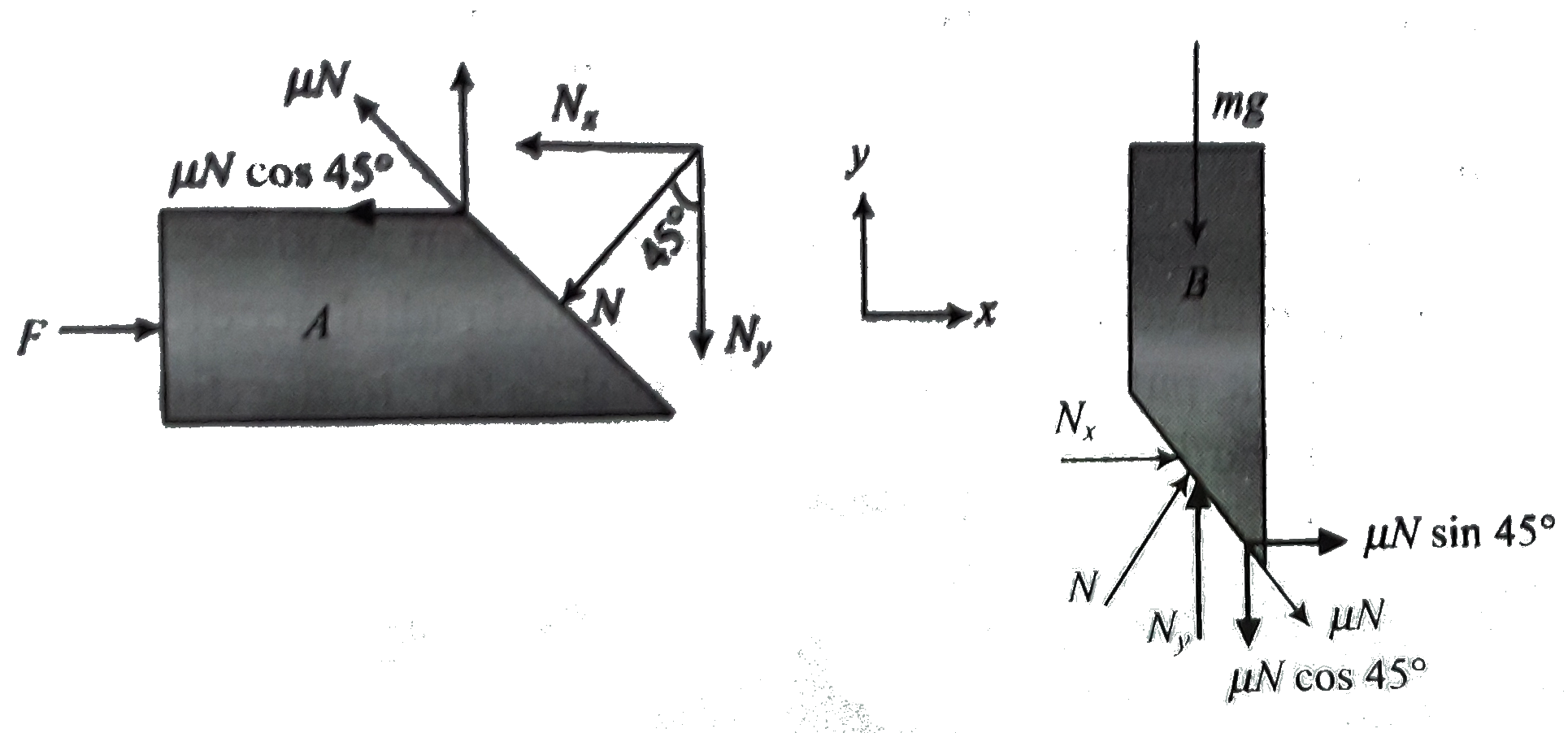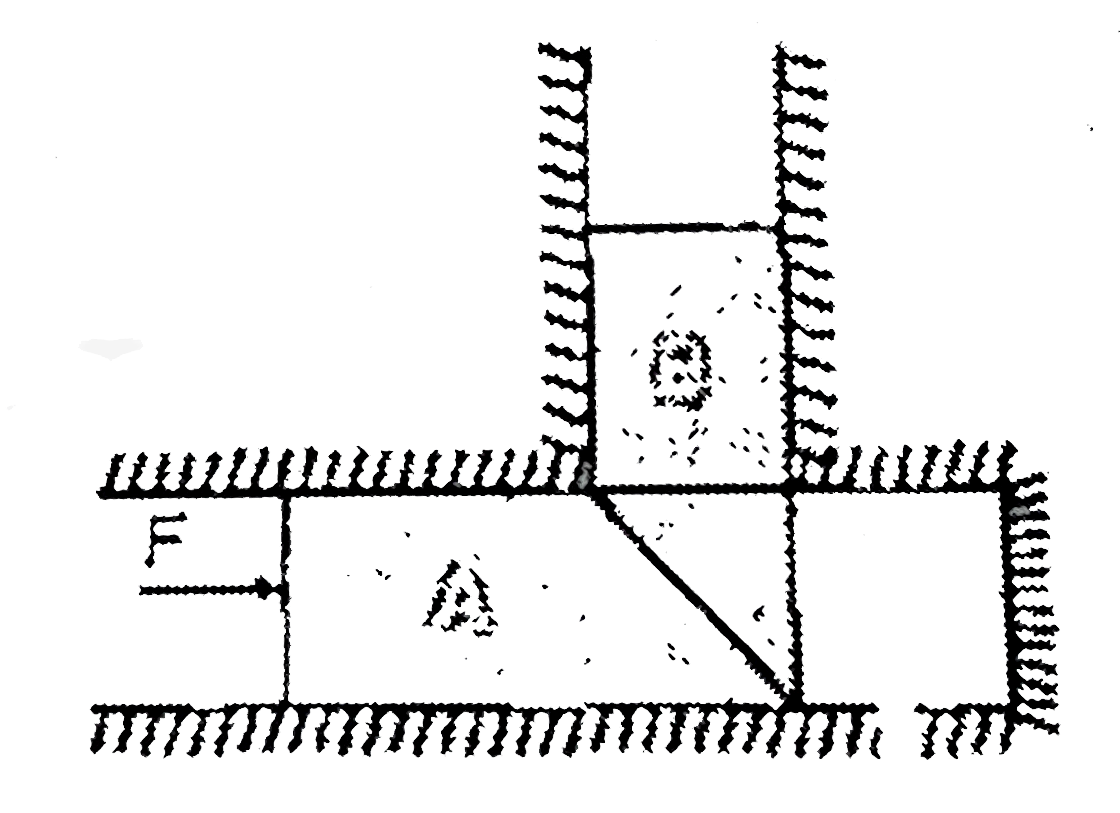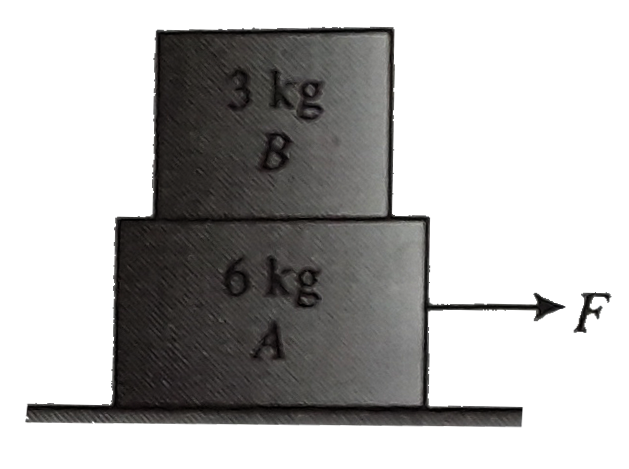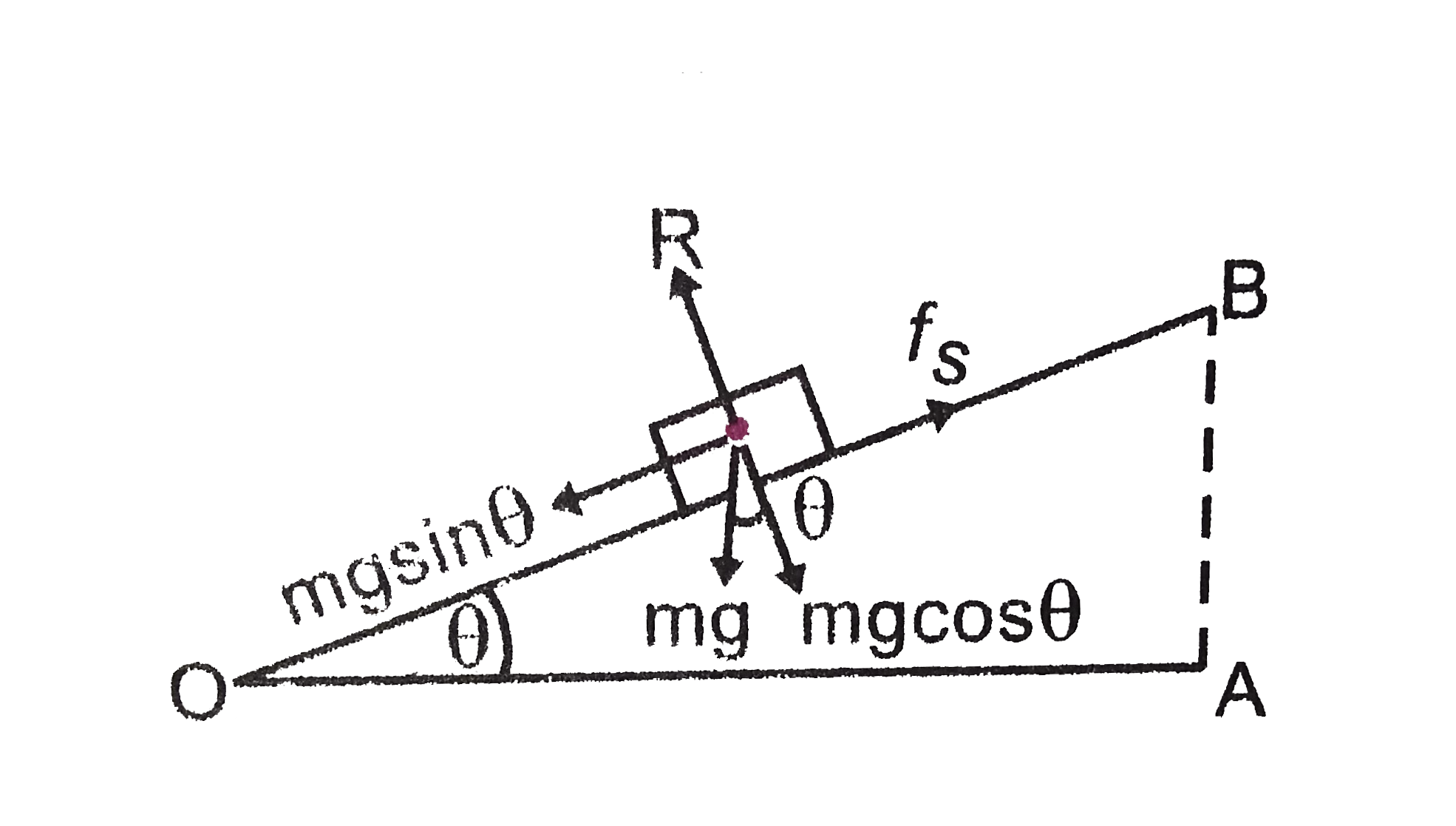A side of a simplified form of verticle latch B is as shown in figure The lower member A can pushed forward in its horizontal channel . The slide of the channels are smooth , but at the interfaces of A and of which are at with the horizontal there exists a static coefficient of friction what is the minimum valueforce that must be applied horizontal to A to start motion of the latch B

For equilibrium of block B
and

For equilibrium of block A
Topper's Solved these Questions
- NEWTON'S LAWS OF MOTION 2BOOK - CENGAGE PHYSICSCHAPTER - NEWTON'S LAWS OF MOTION 2EXERCISE - Exercise 7.3
27 Videos
- NEWTON'S LAWS OF MOTION 2BOOK - CENGAGE PHYSICSCHAPTER - NEWTON'S LAWS OF MOTION 2EXERCISE - Subjective
21 Videos
- NEWTON'S LAWS OF MOTION 2BOOK - CENGAGE PHYSICSCHAPTER - NEWTON'S LAWS OF MOTION 2EXERCISE - Exercise 7.1
25 Videos
- NEWTON'S LAWS OF MOTION 1BOOK - CENGAGE PHYSICSCHAPTER - NEWTON'S LAWS OF MOTION 1EXERCISE - Integer
5 Videos
- PROPERTIES OF SOLIDS AND FLUIDSBOOK - CENGAGE PHYSICSCHAPTER - PROPERTIES OF SOLIDS AND FLUIDSEXERCISE - INTEGER_TYPE
2 Videos
Similar Questions
A side view of a simplified form of vertical latch B is as shown. The lower member A can be pushed forward in its horizontal channel. The sides of the channels are smooth, but at the inteifaces of A and B, which are at 45∘ with the horizontal, there exists a static coefficient of friction μ=0.4. What is the' minimum force F (in N) that must be applied horizontally to A to start motion of the latch B if it has a mass m=0.6 kg question

View SolutionCoefficient of friction between A and B is μ . The minimum force F with which A will be pushed such that B will not slip down is -

View Solution
Knowledge Check
A side view of a simplified form of vertical latch B is as shown . The lower member A can be pushed forward in its horizontal channel . The sides of the channels are smooth , but at the interfaces of A and B , which are at 45∘ with the horizontal , there exists a static coefficient of friction μ=0.4 . what is the minimum force F ( in N) that must be applied horizontally to A to start motion of the latch B upwards if it has a mass m = 0.6 kg ?
 A10 NB0C14 ND22 N
A10 NB0C14 ND22 NA body is sliding down an inclined plane forming an angle 30∘ with the horizontal. If the coefficient of friction is 0.3 then acceleration of the body is
A1.25ms−2B2.35ms−2C3.4ms−2D4.9ms−2Two block A and B of masses 6kg and 3kg rest on a smooth horizontal surface as shown in figure If coefficient of friction between A and Bb is 0.4 the maximum horizontal force which can make them move without separation is
 A72NB40NC36ND20N
A72NB40NC36ND20N
A mass of 4 kg rest on a horizontal plane . The plane is gradually inclined until an angle 0=15∘ with the horizontal and the mass just begins to slide . What is the coefficient of static friction between the block and the surface ?

View SolutionOn a horizontal rought rood , value of coefficient of friction μ=0.4.Find the minimum time in which a distance of 400m can be covered. The car start from rest and finally comes to rest.
View SolutionA force F is acting at an angle θ with horizontal on a block of mass 12 kg placed on a rough 3 horizontal surface having coefficient of friction μ=34 as shown in the figure. The minimum value of force F to just move the block will be (g=10ms−2)
View SolutionA horizontal force F acts on the sphere at its centre as shown. Coefficient of friction between ground and sphere is μ. What is maximum value of F for which there is no slipping?
View SolutionA block is kept on a rough horizontal surface as shown. Its mass is 2 kg and coefficient of friction between block and surface (μ)=0.5. A horizontal force F is acting on the block. When

View Solution
